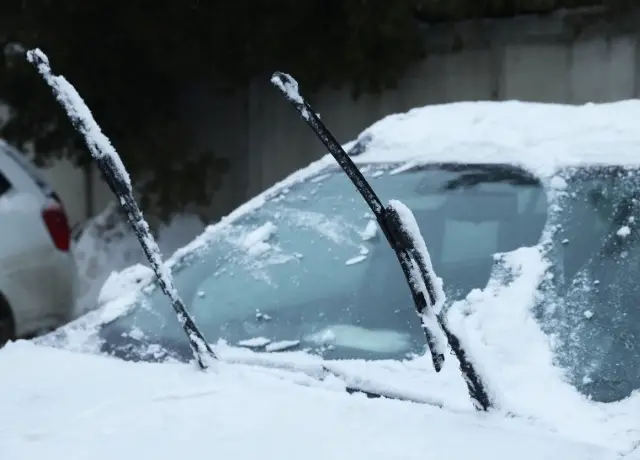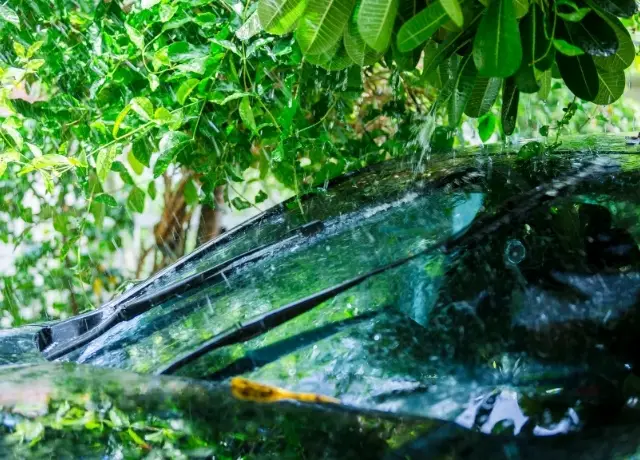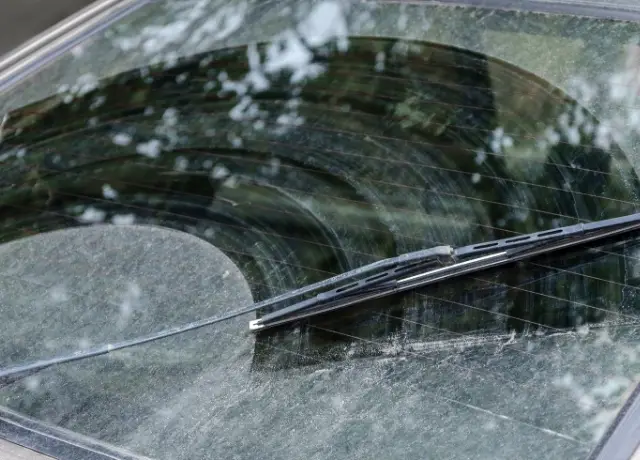Table of Contents
How To Make Your Wiper Blades Last Longer
Driving through the hustle and bustle of daily commutes, it’s easy to overlook the silent heroes of our journey – windshield wipers. They keep us safe and comfortable by fighting against rain, snow, and dust.
But are we giving them the care they deserve? Prolonging the life of your wiper blades not only saves money but also enhances safety.
In this article, we will explore effective methods, including the use of a household staple – WD40, prolonging wiper blade durability. We will examine how wiper blades are affected, signs that they are worn out, and how to care for them.
Let’s dive into wiper blade maintenance, where every swipe counts.

What Affects Wiper Blades Longevity?
A. Weather Conditions:
Wiper blades’ lifespan is heavily influenced by the weather. Whether it’s the relentless summer sun or the harsh winter snow, each element leaves its mark.
In addition, heavy rain and snowfall can wear your blades down over time, especially if they aren’t regularly maintained.
Extreme temperatures can harden and crack the rubber on your blades, reducing their effectiveness.
B. Debris and Contaminants:
Your windshield wipers face silent enemies. Dirt, dust, and debris can accumulate on the blades of your wipers and cause them to streak or skip, reducing visibility.
If not properly cleaned, these contaminants can scratch your windshield.
C. Wiping the Dry Windshield
The durability of wiper blades is often affected by the fact that they are wiped on a dry windshield. This friction can result in premature wear and tear on your windshield wipers, resulting in streaky ones.

How to Make Wiper Blades Last Longer?
A. Regular Cleaning – Clear Vision, Longevity Ensured
Keeping your wiper blades clean is the first step towards ensuring their longevity. Dirt, grime, and debris can accumulate on them over time, reducing their efficiency and causing them to wear out quickly.
You can extend their lifespan and ensure clear vision by simply wiping them down with a cloth or sponge regularly.
To remove stubborn dirt and grime, use WD40 on wiper blades.
B. Proper Wiper Blade Care – Gentle Maintenance, Prolonged Lifespan
Your wiper blades will last longer if you take proper care of them. The rubber on your wipers should not be stressed excessively by handling them gently, avoiding using them on dry windshields, and replacing them as soon as they become worn out.
Keeping an eye on your wiper blades regularly can help you detect problems early and take action before they become a bigger problem.
C. Using Quality Washer Fluid – Nourishing Fluids for Blades
As well as cleaning your windshield effectively, quality washer fluid lubricates your wiper blades, reducing friction and wear. Quality washer fluid not only cleans your windshield but also lubricates it.
As water can freeze and does not have the same cleaning and lubricating properties as washer fluid, it is advisable not to use it as a substitute for washer fluid.
D. Applying WD 40 on Windshield Wipers – Lubricating for Endurance
You can extend the life of your wiper blades with WD40 wiper blades. It is a multipurpose product that can be used to clean your blades and remove any dirt and grime buildup. But its benefits don’t stop there.
WD40 also lubricates wiper blades, reducing friction against your windshield and preventing wear and tear.
You can extend the life of your wiper blades by following this simple step.

Wiper Blade Care in Winter:
A. Winter-Grade Wiper Blades – Cold-Weather Champions
The harsh climate of winter can be particularly challenging to our vehicles, including wiper blades. Standard wiper blades may struggle when it is cold outside, resulting in poor visibility and potentially hazardous driving conditions.
If you live in a colder climate, you’ll benefit from winter-grade wiper blades.
The special coating on these cold-weather champions prevents ice from building up, ensuring clear vision despite harsh weather conditions.
B. Lifting Blades Before Freezing – Preventing Frozen Frustration
Lifting wiper blades before freezing temperatures arrive can prolong their lifespan during winter.
You may damage your windshield when you try to pry wiper blades free or activate them when they are frozen to the windshield.
This frozen frustration can be avoided if your wiper blades are lifted from the windshield.
C. Using Antifreeze Washer Fluid – Thwarting the Frost
During the winter, washer fluid plays an even more important role in keeping your wiper blades in good condition. Regular washer fluid can freeze on your windshield, causing your wipers to be useless and possibly damaging them.
As the wiper blades are exposed to freezing conditions, antifreeze washer fluid keeps them lubricated and protected.
Besides melting ice, this fluid enhances visibility by keeping your windshield clean.
D. Clean the Ice on the Windshield Before Using the Wipers
If your windshield is covered with ice or snow, you need to remove it before activating your wipers.
Clearing heavy ice or snow with your wipers can damage them and put them under unnecessary strain.
By performing this simple step during the winter months, you can greatly extend the life of your wiper blades.

Wiper Blade Care in Summer:
A. Sun Protection – Shielding Against Summer Rays
Often, we consider rain and snow as the main enemies of wiper blades. However, the summer sun is also equally harmful. It can dry out, crack, and deteriorate your wiper blades faster.
To shield your wipers against harsh summer rays, consider using a sunshade when parking in the open.
A silicone lubricant for wipers, like WD40, can also extend the life and effectiveness of wipers by protecting them from UV damage.
B. Parking in Shade – Cool Resting Spots
The best way to prolong wiper blade durability during the summer is to park in shaded areas whenever possible.
It keeps your car cool but minimizes the amount of direct sunlight that your wiper blades are exposed to.
Using a windshield sun protector can also help protect your wiper blades from the heat if shaded parking isn’t possible.
If shaded parking isn’t an option, use a sun protector to protect your wiper blades.
C. Checking for Heat Damage – Heat-Resistant Blades
You need to regularly check your wiper blades for signs of heat damage during the summer sun. Check your wiper blades for signs of warping, cracking, or stiffness, which could indicate that they have been damaged by high temperatures.
The best way to ensure clear vision and safe driving even on the hottest summer days is to choose heat-resistant blades that are designed to withstand extreme temperatures.

Signs of Worn-Out Wiper Blades:
It’s critical to recognize the signs of wear on your wiper blades so that you can drive safely. Be on the lookout for these common red flags that indicate it’s time to change your wiper blades:
Streaking on the Windshield:
If you have old wiper blades, you may notice streaks on your windshield. This happens when the rubber on the blades becomes hard or brittle and does not clear water effectively.
Replace your wiper blades if your windshield leaves streaks or smudges after a few months to ensure maximum visibility.
By cleaning your wiper blades with WD40 windshield wipers, you can prolong their life and prevent streaks.
Chattering or Skipping Movements:
If the wiper blades make unusual sounds or move irregularly while operating, they may not be making proper contact with the windshield.
Often a chattering or skipping wiper is a sign of a bent wiper arm or a deteriorated wiper blade. Resolving this issue ASAP is essential to your safety, especially during adverse weather conditions.
Uneven Wiping:
It is a sign that your wipers are wearing out unevenly and are performing poorly if you notice that certain spots are missed or patches of water are left behind.
It can be especially dangerous during heavy rain or snowfalls when visibility is critical.
Keeping wiper blades clean and lubricated can help extend their life and prevent uneven wiping.
Visible Damage:
An essential part of car maintenance is checking your wiper blades regularly for signs of wear, cracks, or damage.
Any visible defects can compromise their effectiveness, causing poor visibility and potentially dangerous driving conditions.
It may be time to replace your wiper blades if you notice any signs of wear.
Squeaking Noises:
Noises produced by wipers during operation are often caused by friction and inadequate lubrication.
Apply WD40 on windshield wipers or any silicone lubricant for wipers to ensure smooth operation.
If the squeaking persists, it may be time to consider replacing your wiper blades to maintain safe and comfortable driving conditions.

How To DIY Wiper Blade Replacement:
You can easily replace your wiper blades at home by following this simple step-by-step guide:
Lift the Wiper Arm:
If you are replacing a wiper blade yourself, the first step is to carefully lift the wiper arm away from the windshield. It should lock in an upright position, making it easier for you to access the blade. Be gentle when handling the wiper arm to make sure that you don’t damage it.
Release the Old Blade:
Press the tab or button on the wiper blade’s connection point. This is usually found where the blade meets the wiper arm. Press it to release the old wiper blade.
If you apply too much pressure, you might damage the wiper arm, so you should be careful not to damage it. This process might require a bit of force.
Attach the New Blade:
Ensure that the wiper arm is aligned with the new blade and that it clicks into place according to the manufacturer’s instructions.
Now it’s time to attach the new wiper blade. The wiper blades must be aligned correctly for them to function smoothly, so take your time ensuring this is done correctly.
Lower the Wiper Arm And Test Them:
Lastly, lower the wiper arm back onto the windshield by gently lowering it.
The new blades should make smooth and even contact with your windshield, without skipping or streaking. The wiper blades should not skimp or streak when you turn them on.
If you notice any problems with the wipers, you may need to adjust them or apply silicone lubricant for wipers, such as WD40 windshield wiper blades, to ensure smooth operation and wiper blade longevity.
Frequently Asked Questions:
Q: When should I clean my wiper blades?
A: The wiper blades should be cleaned regularly, either at the time you fill up your gas tank or at least once a month. Regular cleaning wiper blades with WD40 will remove any built-up grime, extend the life of your wiper blades, and ensure that they perform at their best.
Q: Is it okay to use regular soap instead of washer fluid?
A: Washer fluid is specifically formulated to break down dirt and grime on windshields without leaving streaks or damaging wiper blades.
Regular soap may be used temporarily in an emergency, but it should not be used long-term.
Q: In winter, should wiper blades be lifted?
A: If you lift your wiper blades throughout winter, especially during snowy weather, they will not freeze to the windshield.
This will also reduce the wear and tear of the rubber blade and keep it in good condition.
Q: What is the best way to choose winter-grade wiper blades?
A: Choose wiper blades that have robust frames that can withstand heavy snowfall, as well as synthetic rubber squeegees that remain flexible in cold temperatures, when choosing winter-grade wiper blades.
According to your vehicle’s owner’s manual, choose a blade that fits its size and style.
Q: Is WD40 suitable for all wiper blades?
A: Lubricating and cleaning wiper blades with wd40 is totally safe. However, it’s important to follow the manufacturer’s instructions to ensure it’s safe for your wiper blades.
Q: How can you tell if wiper blades have been damaged by heat?
A: During the summer months when temperatures are higher, wiper blades will tend to warp, crack, stiffen, and become less effective at clearing the windshield because of heat damage.
Q: Do both wiper blades need to be replaced at once?
A: Generally, it is recommended to replace both wiper blades at the same time. This ensures that both blades perform equally well and that you can see clearly.
Q: Are silicone-based lubricants an alternative to WD40?
A: It is possible to use silicone-based lubricants to maintain flexibility and prevent the rubber from drying out on wiper blades. These are not only squeaky windshield wipers WD40 alternatives but also ensure wiper blade longevity.
Q: How can homemade washer fluid be made?
A: The most common DIY solution for washer fluid is to mix one gallon of distilled water with one cup of glass cleaner and a half cup of household ammonia. However, cold climates should not use this solution as it can freeze.
Q: If I need to replace my wiper blades, how do I know when to do it?
A: In addition to streaking on your windshield, chattering or skipping movements, uneven wiping, visible damage to the blades, and high-pitched squeaking noises, it’s time to replace your wiper blades. You can identify these signs early through regular inspection and maintenance.
Conclusion:
It is essential to maintain the condition of wiper blades for safe and comfortable driving. Regular cleaning, inspection, and timely replacement can help extending wiper blade life and greatly improve the effectiveness.
The right wiper blade maintenance won’t make a difference whether you’re dealing with rain, snow, or heat. Visibility is crucial when it comes to road safety, and well-maintained wiper blades play an integral role.
Using silicone lubricant for wipers or Wd40 wiper blades will help achieve wiper blade longevity.
With this guide, you’ll learn how to check your wiper blades, identify worn-out blades, and replace them yourself, and some tips for prolonging wiper blade durability, so your windshield stays clear and your drive stays smooth, regardless of the weather.
